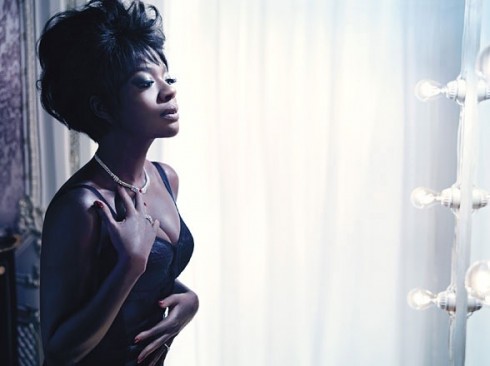
The Root is reporting that Viola Davis responded to being called “less classically beautiful”, by Alessandra Stanley of The New York Times, during an appearance on The View. The comment was made in the very same article that labeled Shonda Rhimes an “angry black woman.” The article read:
“The actress doesn’t look at all like the typical star of a network drama… Rhimes chose a performer who is older, darker-skinned and less classically beautiful than Kerry Washington, or for that matter Halle Berry…
The article by Stanley was commenting on Davis’s lead role as Professor Annalise Keating in the new hit show How To Get Away With Murder, which is produced by Grey’s Anatomy and Scandal‘s Shonda Rhimes.
Davis responded to the article on The View saying:
“I think that beauty is subjective. I’ve heard that statement [less classically beautiful] my entire life. Being a dark-skinned black woman, you heard it from the womb. And “classically not beautiful” is a fancy term for saying ugly. And denouncing you. And erasing you. Now … it worked when I was younger. It no longer works for me now. It’s about teaching a culture how to treat you. Because at the end of the day, you define you.”

Davis also took to Twitter, quoting Maya Angelou’s Still I Rise:
“You may shoot me with your words, you may cut me with your eyes, you may kill me with your hatefulness, but still, like air, I’ll rise!!!”
The article received an enormous amount of backlash via the internet. Many African American women have begun adding the hashtag #LessClassicallyBeautiful to their tweets and posting pictures showcasing themselves as “Less Classically Beautiful.”
Though upsetting, the comment made by Stanley and the debate surrounding it is nothing new to African American communities. The 1940’s “Landmark Doll Test” examined the psychological effects of segregation on black children. The test was used to determine racial perception and preference in children. It was found that when giving a choice between two dolls, one white and the other black, the majority of the children selected the white doll and associated positive attributes with it.
Color discrimination has existed in the black community for many generations. Authors Kathy Russell, Midge Wilson, and Ronald E. Hall discuss the issue of light and dark skinned people, how they relate to one another, and how they are influenced by the legacy of racism in their book “The Color Complex: The Politics of Skin Color Among African Americans.”

Following the backlash from the public, the New York Times public editor Margaret Sullivan issued a statement promising to have Stanley explain her intended meaning, but also added that the articles true intent was not to offend. Sullivan said:
“Intended to be in praise of Ms. Rhimes, it delivered that message in a condescending way that was – at best – astonishingly tone-deaf and out of touch.”
Read more at TheRoot.com.
This post was written by Reginald Calhoun, editorial assistant for The Burton Wire. He is a junior Mass Media Arts major at Clark Atlanta University. Follow him on Twitter @IRMarsean.
Like The Burton Wire on Facebook. Follow us on Twitter @TheBurtonWire.










[…] what has blocked black art from mainstream society. The black body is not considered to be “classically beautiful,” and so it is not […]
Comments are closed.